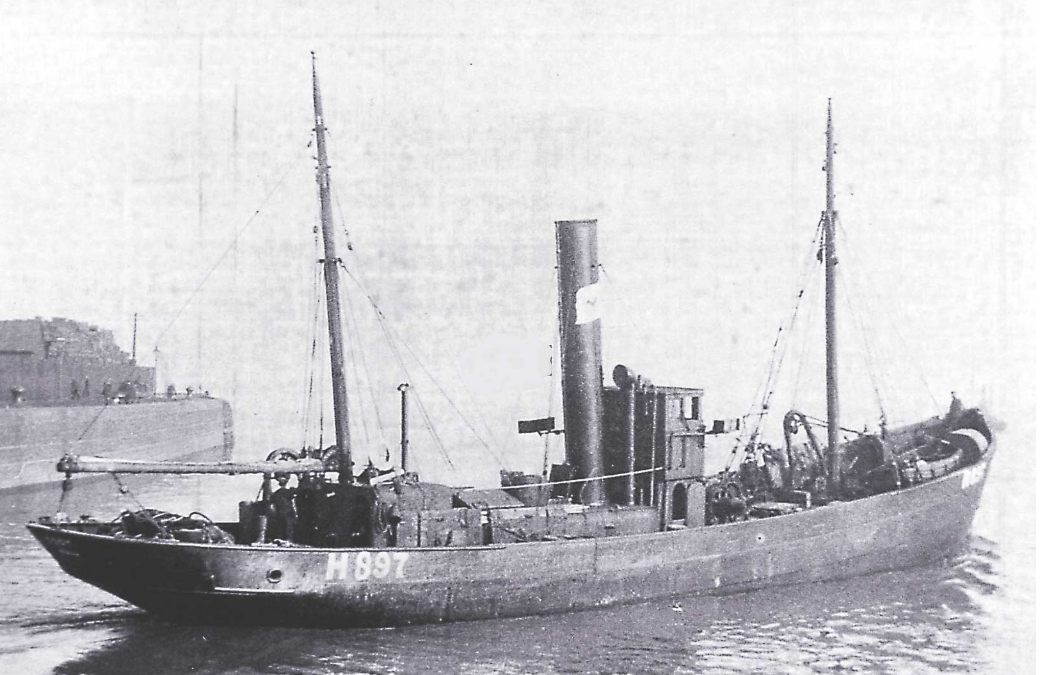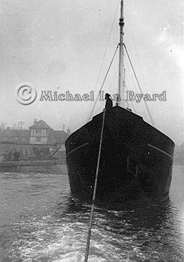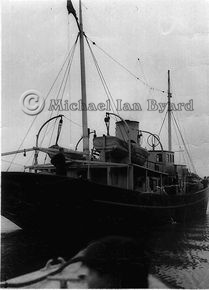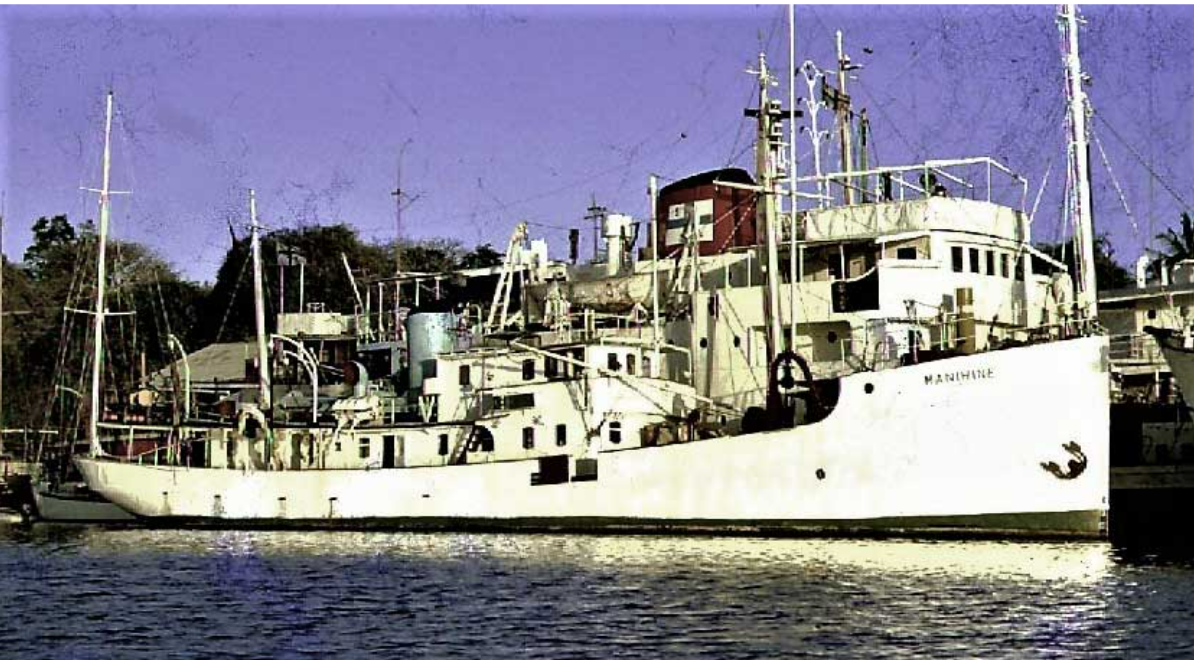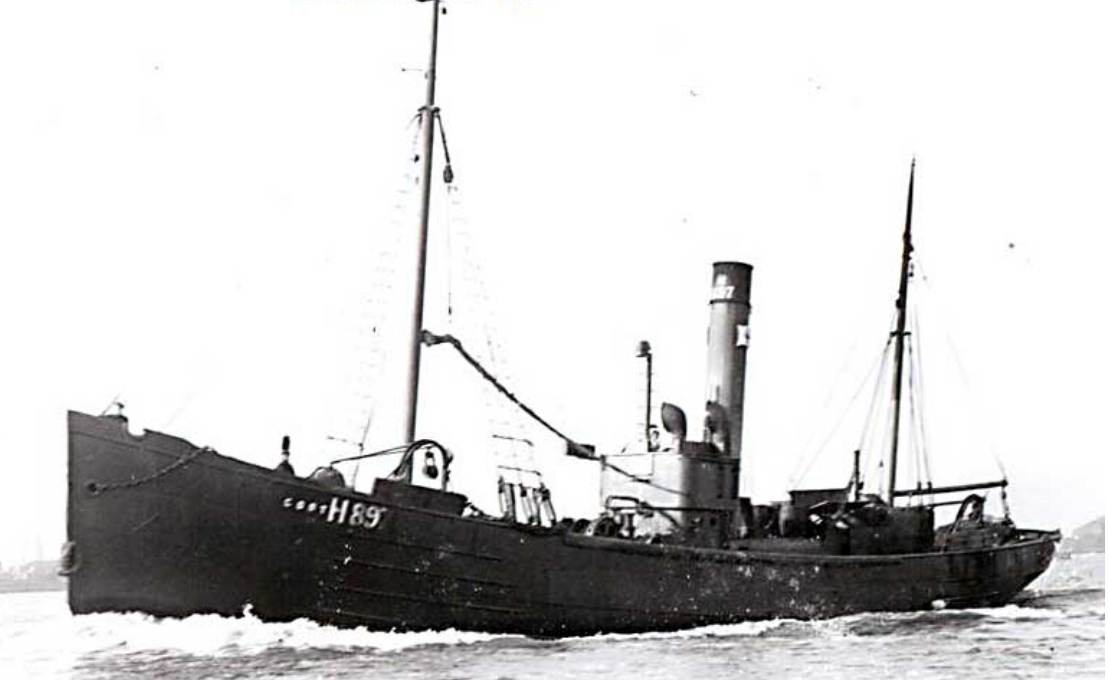
The 1st, 2nd and 4th photographs and the story of Coot and subsequently Manihine are reproduced here by kind permission of Kevin Patience and used with grateful thanks. The two photos -side-by-side were taken by my late Father Jack Byard.
The extraordinary story of the trawler COOT 1906 -1997
In the early 1900s the UK fishing industry was at its height employing thousands of people and sailing hundreds of steam trawlers to sea on a daily basis. These ships ranged far and wide through the North Sea, Atlantic and up to Iceland in some atrocious weather to bring back fish for the home market. Thousands of tons of fish were offloaded at the fishing ports around England and were gutted and barrelled by women for sale at Billingsgate and other markets. It was a relentless unforgiving business. Trawlers sailed crewed by family members and simply disappeared in the huge storms, leaving families bereft and penniless.
One of the trawlers that survived far longer than its contemporaries was the Hull trawler H897 named COOT after the water bird resembling a duck. She was built in 1906 by the Goole Shipbuilding Co. for Kelsall Bros. and Beeching and was 110 feet long powered by a three-cylinder steam engine and boiler built by Earle’s Shipbuilding. With the outbreak of the First World War in 1914 she was requisitioned as a minesweeper and fitted with 2 x 12pdr guns and a 7.7 inch anti-submarine howitzer. Three years later her role changed to that of ‘Q’ ship or decoy vessel to lure submarines to attack a supposed unarmed trawler and had four name changes, Burmah, Dora, Kia Ora and Lorne. At the end of hostilities she returned to her owners as the Coot and resumed fishing but was the subject of considerable changes in her finances being mortgaged a number of times between 1919 and 1932. By March 1936 rising costs and declining catches saw Coot and many other trawlers laid up at Hull. Three months later she was sold to Heward Trawlers and moved to Fleetwood where she was again laid up.
Around this time two brothers Joe and Edward Lumb bought the ship in August and transferred her to Nicholsons at Glasson for conversion to a private yacht. The new design was undertaken by Casebourne and Turner to Lloyds A1 specification. All the fishing equipment was removed and six luxurious cabins with two bathrooms fitted in the fish hold. The steam engine was replaced by twin 220hp National diesel engines with additional fuel and water tanks and renamed Dorade II. The old superstructure was replaced with a modern wheelhouse fitted with an echo sounder, wireless direction finder and telephones to all parts of the ship. The galley was upgraded and the ship managed by a captain, engineer and four crew.
The declaration of the Second World War in September 1939 saw the ship requistioned for a second time, hired at the rate of £206 10s a month and based at Reykjavik, Iceland as an inspection vessel. After the war she was sold in September 1945 to Major H.W. Hall, the then Rear Commodore of the Lymington Yact Club, converted into a research vessel and renamed MANIHINE. In 1948-49 she completed an expedition to the Gulf of Aqaba in the Red Sea to collect marine samples for the Natural History Museum in London. In 1955 she was sold to Singapore where she carried out fisheries research along the Malayan coast. Six years later she was sold to East African Marine Fisheries Organisation in Mombasa for the grand sum of £1. A number of EAMFRO reports exist of the ship’s voyages and in 1962 she was managed by at least twenty crew. In 1974 I joined Southern Engineering who by that time were responsible for the maintenance as the parent company Southern Line were now the ship’s managers. While we had the ship alongside a major electrical refit took place in accordance with Lloyds requirements where we removed many yards of ancient lead coated wire, replacing this with new marine cable and overhauled the D.C. generator. During the next two years the ship spent time at sea collecting marine specimens for analysis from as far away as the Seychelles.
In 1976 the ship was sold to the Institute of Marine Sciences in Zanzibar and operated from there with occasional trips back to Mombasa for repairs. In early 1977, I flew to Zanzibar to repair an electrical fault but on arrival was arrested by a young boy carrying an AK-47 rifle who ordered me back on the plane. Fortunately, the Operations Director from the ship’s owners was able to extract me from a rather unpleasant situation. On completion of repairs, I flew out on the last East African Airways flight before the airline folded. The ship remained in Zanzibar and laid up in 1978 when she grounded on a sandbar. Refloated she was sold and traded along the coast until the 1980s. Possibly due to a lack of spares, the ship was beached in Dar es Salaam and by the 1990s had been stripped of all its fittings. I was in Dar es Salaam in 1996 and recognised the now scrapped hull of the Manihine and when I next returned a year later, the rusted remains had gone. The ninety-one year old vessel was no more.
